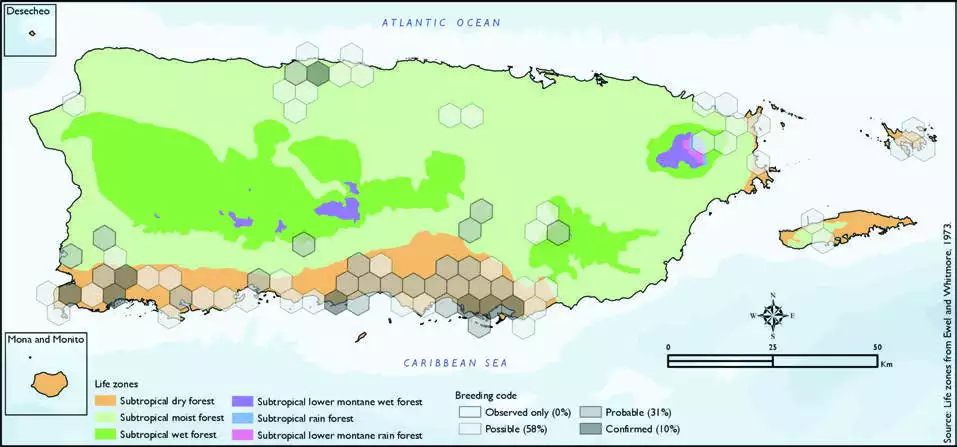Mourning Dove
Description
The mourning dove (Zenaida macroura) is a member of the dove family, Columbidae. The bird is also known as the American mourning dove, the rain dove, and colloquially as the turtle dove, and was once known as the Carolina pigeon and Carolina turtledove. It is one of the most abundant and widespread of all North American birds. It is also a leading gamebird, with more than 20 million birds (up to 70 million in some years) shot annually in the U.S., both for sport and meat. Its ability to sustain its population under such pressure is due to its prolific breeding; in warm areas, one pair may raise up to six broods of two young each in a single year. The wings make an unusual whistling sound upon take-off and landing, a form of sonation. The bird is a strong flier, capable of speeds up to 88 km/h (55 mph). It is the national bird of the British Virgin Islands.
Distribution & Habitat
The Mourning Dove occurs through North and Central
America including the Caribbean
(Raffaele and others 1998). This
species was first reported in
Puerto Rico in 1935 (Bond 1987)
and in Vieques in 1967 (Bond
1967). In Puerto Rico, it occurs
primarily in the southwestern
region (Biaggi 1997) but also in
the northern coastal plains, and
it is known to inhabit satellite
islands such as Mona (Gordon
and others 1961) and Vieques.
It is a rare resident throughout
the year in Vieques (Gemmill
2015) and a rare visitor to Mona. This species is associated mostly
with subtropical dry and moist
forest life zones, plantations
(Rivera-Milán 1992), grassy fields
(Saliva 1994), and open country
of the lowlands (Raffaele and
others 1998). The atlas fieldwork
yielded a total of 129 records
within 77 hexagons or 16 percent
of the 479 total hexagons (see
map). Of the 77 hexagons
where this species was found,
breeding met the atlas definition
of confirmed in 10 percent (8)
of the hexagons, probable in
31 percent (24), and possible in
58 percent (45) (see map). Mourning Dove distribution. The map shows the highest breeding code by hexagon and overlaying the ecological life zones in
Puerto Rico. Note: percentages may not total 100 due to rounding. 65Mourning Dove/Tórtola Rabilarga

Breeding Habits
The Mourning Dove builds a nest made of twigs and grasses, which is usually placed in a
bush or tree at a low to medium
height (Raffaele and others 1998).
Previously published reports
indicate that it breeds from
March to August (Raffaele and
others 1998). Atlas results suggest
that this species breeding season
extends throughout the year,
with the most breeding activity
from March to June (see chart).
Overall, the breeding activity
peaks in April. Results show that this species breeds mostly on
the southern coast of the island
within the subtropical dry forest
life zone (64 percent of the hexagons) (see table). However, results indicate that it also
breeds in the lowlands within
subtropical moist forest life zone
(32 percent of the hexagons)
(see table and map).
Conservation
The current population trend of the Mourning Dove is described
as increasing in North America (Butcher and Niven 2007). This
species is currently listed as a
species of least concern by the
IUCN (BirdLife International
2016). Locally, this species is not
listed in any of the threatened
categories of PRDNER and
USFWS. In Puerto Rico, the
Mourning Dove has a protected
habitat in land of 13 percent or
236 km2 of the total area covered by the hexagons where evidence
of breeding was found this
species (1842 km2).
Related Species
Family:
dove